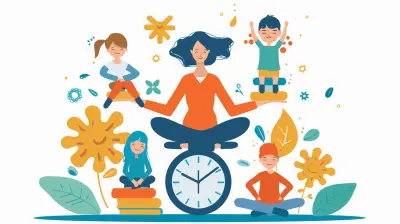Exploring Neuroplasticity: How Your Brain Adapts and Changes
24 July 2025
Ever thought your brain was set in stone once you became an adult? Think again. There’s a fascinating concept in psychology and neuroscience that’s completely changing the way we view the brain's capabilities—it’s called neuroplasticity. Don’t worry if that sounds like a mouthful. At its core, it just means your brain’s got some serious flexibility.
In this article, we’re going deep on how your brain rewires itself, why that’s important, and how you can even train your brain to change for the better. Whether you're trying to pick up a new skill, recover from trauma, or just understand yourself better—neuroplasticity is kind of a big deal.
So, let’s unpack this brainy topic in a way that actually makes sense.
What is Neuroplasticity?
Alright, let’s start with the basics.Neuroplasticity (also called brain plasticity) is your brain's ability to reorganize and adapt—both its structure and function—throughout life. Think of your brain like a big, buzzing city. The roads (your neural pathways) can be built, re-routed, strengthened, or even demolished. That’s neuroplasticity in action.
This isn’t just science-fiction or wishful thinking—it’s real, observable, and supported by a mountain of research. Your brain’s not a static machine; it's more like a living, breathing organism constantly responding to your experiences, habits, and environment.
Types of Neuroplasticity
Not all neuroplasticity is the same. There’s a bit of nuance (or, brainy detail) here—but it’s not too complicated.1. Structural Plasticity
This is all about the physical changes in the brain. We're talking actual growth of new neurons (yes, your brain can make new cells—a process called neurogenesis), and the strengthening or weakening of synaptic connections (the links between neurons).Ever tried learning a new language or picking up the guitar? That’s structural plasticity at work—building new ‘roads’ in your brain.
2. Functional Plasticity
Now, this one's all about function rather than structure. It's when a certain region of the brain takes over functions that another part used to do. This often happens after injury or damage. Imagine if part of your brain was a restaurant that had to shut down. Another nearby brain-area might step in and whip up dinner in its place.Crazy, right? But it happens—your brain can redelegate tasks to stay in action.
What Triggers Neuroplasticity?
Okay, so what makes your brain change like this? Turns out, quite a few things can jumpstart neuroplasticity.1. Learning New Skills
Your brain loves a challenge. When you’re learning something new—coding, playing piano, or even juggling—your brain starts forming new connections between neurons. Over time, these get stronger the more you practice. Like working out, but for your grey matter.2. Experiencing Trauma or Injury
Oddly enough, injuries can also lead to plasticity. When someone has a stroke, for example, other parts of the brain can often take over lost functions (with the right rehab and therapy). It’s not perfect, but the ability your brain has to compensate is pretty remarkable.3. Emotional Experiences and Therapy
Ever gone through something emotionally intense and come out the other side with a totally new outlook? That’s psychological adaptation—aka your brain reorganizing itself in response to deep emotional events. Therapy, especially approaches like CBT (Cognitive Behavioral Therapy), can literally reshape thought patterns.4. Repetition and Practice
So simple, but so effective. Practicing something over and over again tells your brain: "Hey, this is important!" Your brain then strengthens the pathways linked to that activity.5. Meditation and Mindfulness
You don’t have to be a monk to change your brain. Mindfulness practices (like meditation and breath work) have been shown in brain scans to thicken certain brain areas and improve connectivity. Who knew sitting still could be so powerful?
The Science Behind the Scenes
Let’s nerd out for a sec—but just enough to really get this.At the heart of neuroplasticity are neurons, the tiny nerve cells in your brain. They communicate through electrochemical signals by way of synapses. Whenever you think, feel, or do something, your neurons are firing, trying to connect with one another.
Now here's the key bit: "neurons that fire together, wire together."
That’s the neuroscience version of “practice makes perfect.” The more often two neurons fire in sync, the stronger the connection between them becomes. Over time, those connections become superhighways for information.
Oppositely, connections that aren’t used much? They weaken. Eventually, they can wither away entirely. It’s like pruning a tree—cutting away the unused parts to make room for growth elsewhere.
Real-Life Examples of Neuroplasticity
Still not convinced your brain's basically a superhero? Check out these real-world uses of neuroplasticity.Stroke Recovery
Patients who lose movement or speech from a stroke often retrain different parts of their brain to take over the damaged areas. Through physical therapy, speech therapy, and pure persistence, many regain function over time.Phantom Limb Pain
Some people who’ve lost a limb still feel pain in it—it’s called phantom limb syndrome. Therapy that “tricks” the brain into believing the limb is still there (like mirror therapy) uses neuroplasticity to reduce pain over time.Overcoming Addiction
Therapeutic strategies help people rewire addictive behaviors. By reconditioning reward circuits in the brain, individuals learn new, healthier patterns that slowly replace compulsive ones.Learning as Adults
It's not just kids with plastic brains. Adults can (and do) learn new languages, master skills, and adapt to life's curveballs—all thanks to ongoing plasticity.How to Boost Your Brain’s Plasticity
Here’s the fun part: you can actually train your brain to be more adaptive. Yes, really.1. Keep Learning
Stay curious. Read books, take online courses, pick up a new hobby. Your brain thrives on mental workouts.2. Exercise Regularly
Moving your body boosts blood flow, which helps create new neurons and promotes connectivity—especially in the hippocampus (the memory hub).3. Meditate Daily
Even just 10 minutes a day can strengthen the regions of your brain responsible for focus and emotional regulation. Apps like Headspace or Calm make it super accessible.4. Get Enough Sleep
Sleep isn't just rest—it's when your brain consolidates memories and repairs itself. If you’re sleep-deprived, your brain’s plasticity takes a major hit.5. Change Up Routines
Challenge your brain by doing everyday things differently. Brush with your non-dominant hand, take a different route to work, or try cooking a recipe from another culture.6. Socialize
Yep, hanging out with friends is actually good for your brain. Social interactions spark neural activity and help keep your emotional circuits flexible.The Good, the Bad, and the Plastic
Here’s where it gets real: neuroplasticity isn’t always positive.Just like your brain can form good habits and adapt in helpful ways, it can also reinforce negative patterns. Think anxiety loops, addiction, or chronic stress responses. Your brain doesn’t judge—it just builds what you repeat.
But here’s the silver lining: what can be wired in can also be unwired. It takes time, effort, and sometimes professional help, but it is possible to redirect those pathways.
Neuroplasticity in Mental Health
If you struggle with anxiety, depression, PTSD, or any number of psychological challenges, neuroplasticity brings hope. It tells us that you're not stuck. Your brain can change, and therefore, so can your mental health.Therapies like cognitive restructuring, exposure therapy, EMDR, and even certain medications work by tweaking neural pathways and teaching your brain new ways to respond to old triggers.
You’re not broken. Your wiring just needs a tune-up.
Final Thoughts: Your Brain is a Work-in-Progress
Here’s the takeaway: your brain is not a finished product.It’s a shape-shifter. A dreamer. A student. It’s building itself every single day based on what you feed it, how you treat it, and what you focus on. That means you’re never too old, too damaged, or too stuck to change.
You have more influence over your mind than you think.
So next time you feel overwhelmed or stuck in a rut, remember: your brain has plasticity on its side. Flex it. Challenge it. Give it something new. You might be surprised what it can do.
all images in this post were generated using AI tools
Category:
NeuroscienceAuthor:

Eliana Burton
Discussion
rate this article
1 comments
Rusty McMillan
This article beautifully highlights the remarkable capacity of our brains to adapt through neuroplasticity. It’s a powerful reminder that our experiences shape us and that growth is always possible. Embracing this knowledge can inspire us to approach challenges with a mindset of resilience and hope.
August 17, 2025 at 3:17 AM

Eliana Burton
Thank you for your insightful comment! I'm glad you found the article inspiring and reflective of our brain's incredible adaptability.


